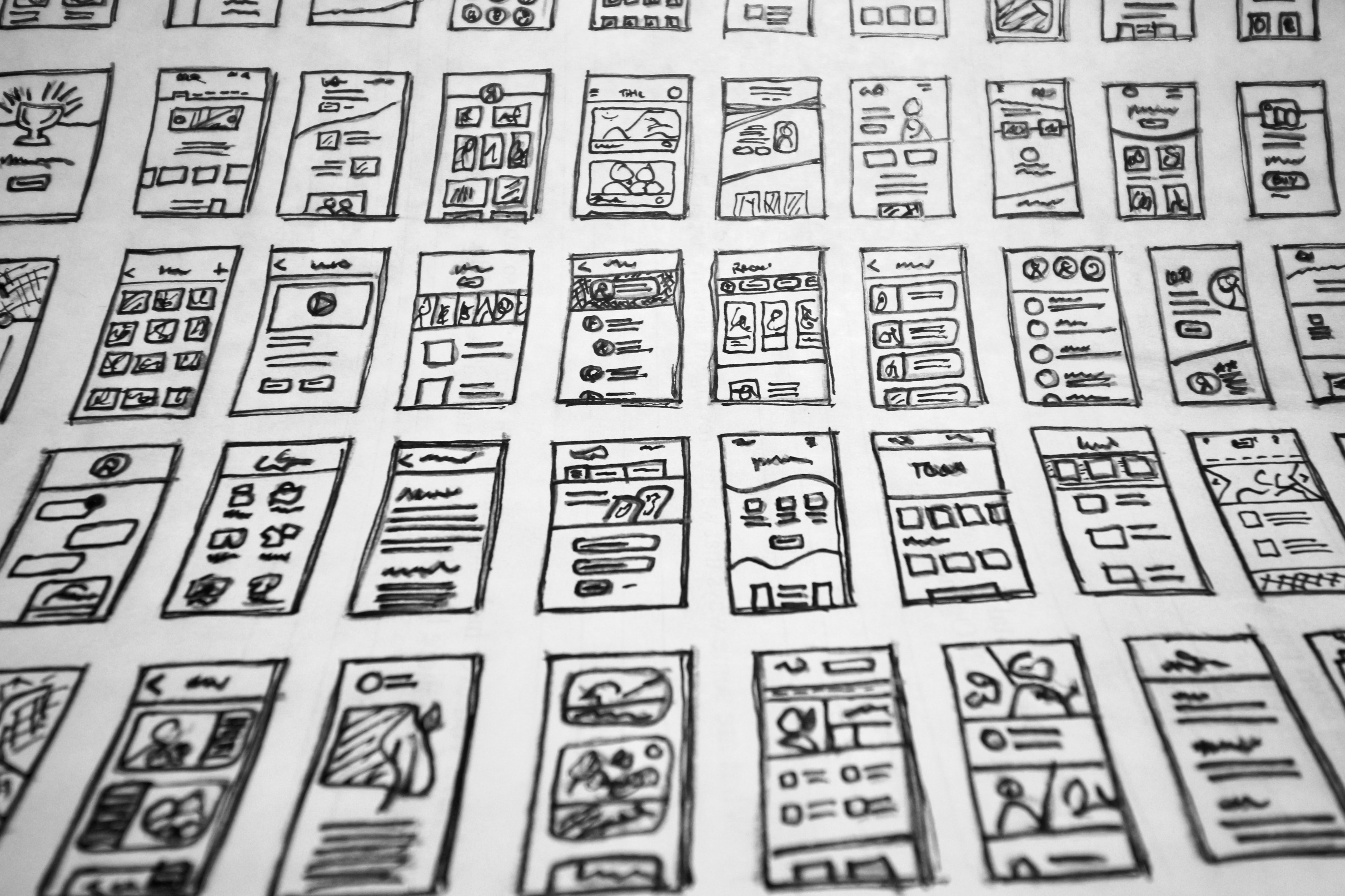Why Good UX is Important for CX
Perhaps you’re familiar with the term user experience (UX) but aren’t quite sure if customer experience (CX) and UX are one in the same or different...
5 min read
Written by Dan Gower, Sep 15, 2023

In the bustling world of technology, user experience (UX) sits at the heart of success. But the “one size fits all” notion doesn’t always apply at the enterprise level. The UX strategy that works wonders for a consumer app may be an epic failure in an enterprise setting.
Your business isn’t just about what software you offer — it’s also about usefulness. The journey you provide to your users, whether they’re shoppers or professionals, is vital to the success of your business.
So, how do you make sense of the nuanced world of consumer UX vs. enterprise UX? We’re diving into both to help you better understand what’s right for your business.
User Experience (UX) design is the science of creating enjoyable interactions between users and products. The UX process covers the entire user journey, from awareness to purchase and beyond.
UX design focuses on aesthetics, usability, accessibility, functionality, and performance. So, it’s integral to both consumer and enterprise software.
For consumer software, UX design helps ensure the software is intuitive, enjoyable, and user-centric. Good UX design can increase customer satisfaction, loyalty, and word-of-mouth referrals.
For enterprise software, UX design enhances productivity and reduces errors. Employees need access to these tools daily. So, good UX can improve efficiency, reduce training needs, and save time and money.
So, whether it’s a social media app used by millions or an internal database used by a small team, the goal is to provide a seamless user experience.
Consumer User Experience relates to products, services, or systems that cater to the needs of end-users or consumers. Its main aim is to provide a user-centered and enjoyable experience. Websites, mobile apps, and other consumer goods and services all benefit from Consumer UX.
Any time someone interacts with a digital product or service for personal use, Consumer UX comes into play. As a result, the user audience can be broad. Users range from someone shopping on an e-commerce platform to a teen using a social media app or a senior using a digital health service. Because demographics vary so widely, the design process is complex and multi-faceted.
A key consideration when creating Consumer UX is understanding the target user base. Often, this is achieved through user research. Common techniques include surveys, interviews, and user testing. Regardless of the method, the goal is to gain insight into user needs, behaviors, and preferences. The result should meet users’ needs and expectations while providing a pleasurable experience.
Finally, design responsiveness is essential. Consumers use a vast array of devices to access digital products and services. Whether on a desktop computer, a tablet, or a mobile phone, the user experience should be consistent and high-quality. Consumer UX requires designing with the end user in mind. Successful Consumer UX design will be functional as well as enjoyable, accessible, and intuitive. Ultimately, it should foster customer loyalty and drive user engagement.
Learn more: 5 Elements of UX Design
Enterprise user experience pertains to software, applications, and systems for businesses and organizations. Unlike Consumer UX, which targets a subset of the general public, Enterprise UX zeroes in on a specific group of users. Namely, it focuses on employees, contractors, and other stakeholders who use these systems for work.
Enterprise UX serves industries like healthcare, finance, supply chain management, manufacturing, and human resources. In these sectors, tasks are data-oriented and detailed. The needs of enterprise software users differ significantly from those of consumer applications. Typically, these users need efficient and accurate completion of tasks, often under pressure.
Legacy systems are one of the biggest challenges in enterprise UX. Many enterprises have been using specific software or systems for decades. So, transitioning to a new system can be a monumental task. Not only does this involve migrating huge volumes of data, but it also requires ensuring minimal workflow disruption.
Enterprise tasks can be complex. Designing an interface that streamlines complicated tasks is a delicate balancing act. Moreover, enterprise UX must account for many user roles and permissions. And each one has unique priorities and workflows.
Compared to Consumer UX, Enterprise UX often requires more industry knowledge. It focuses less on initial engagement and more on long-term productivity and efficiency. Aesthetics may take a backseat to functional requirements, like efficiency and accuracy. Given the importance of these systems to businesses, reliability, and security are paramount.
Learn more: Integration Guide for Enterprise App Development
Understanding the differences between Consumer and Enterprise UX is essential for several reasons. Each approach has unique objectives, users, and requirements. Distinguishing the differences enables engaging and successful solutions.
By understanding the differences, businesses can make informed decisions, better allocate resources, and create products that resonate with their users.
6 Reasons to Invest in Enterprise UX
Investing in good Enterprise UX is crucial for businesses for several reasons:
A well-designed UX makes tasks simple and more intuitive. It enables users to complete their objectives more quickly and easily. As a result, the organization is more productive and efficient. Excellent enterprise UX means less time and effort wasted on unclear processes.
If the software is frustrating, it can contribute to employee dissatisfaction. In contrast, software that’s easy to use can improve morale and job satisfaction. This, in turn, can lead to better employee retention.
If a user interface is intuitive and mirrors the users’ workflows and expectations, users need less training to be proficient. That can reduce training time and costs.
Good UX design helps prevent user errors. By providing clear safeguards, Enterprise UX confirms actions that could have serious consequences.
If the enterprise software is easy to use and offers a clear benefit over old processes, employees are more likely to embrace it. This can help to ensure a higher adoption rate for new tools and processes.
Companies that invest in a good Enterprise UX may gain a competitive advantage. Their workforces can be more efficient, adaptable, and customer-focused.
In a world where digital transformation is becoming a necessity, investing in a good Enterprise UX is not just a nice-to-have—it’s vital. Enterprise UX should be part of any competitive business strategy.
Today, understanding the distinctions between Consumer and Enterprise UX is critical.
The effectiveness of your UX strategy isn’t about choosing one approach over the other. Instead, it’s about realizing that various environments require different user experiences. So, whether your mission is to design an app for millions or to refine a system for a team, understanding how to select the right UX strategy matters.
Implementing a comprehensive UX design, be it Consumer or Enterprise, is no longer a choice. In this digital age, it’s crucial to your business strategy. But don’t fret about embarking on this journey alone. Our team of experts will guide you through the process. You can count on us to deliver tailored solutions that match your business’s unique needs.
So, why wait? It’s time to take decisive action for your business’s future. Boost your business performance, productivity, and customer satisfaction with custom UX design. Schedule a consultation with Designli’s design experts now. We’re ready to guide you every step of the way.
You might also like:
Subscribe to our newsletter.

Perhaps you’re familiar with the term user experience (UX) but aren’t quite sure if customer experience (CX) and UX are one in the same or different...

For an app or software product to be successful, users have to actually use it. How many times have you heard horror stories of companies building an...

In the modern landscape of technology, there is a ton of competition. And the hard truth is—no product can succeed without an excellent UX Designer.